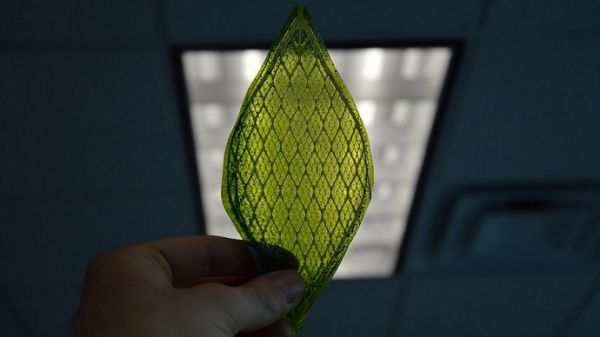Man-Made Photosynthesizing Leaf Could Breathe Air Into Buildings And Spaceships!
The first ever leaf that turns light and water into oxygen.
If humanity hopes to realize its dreams of exploring the stars, we’re going to need to find ways to recreate life on Earth aboard a spaceship. Simply stockpiling enough vital supplies isn’t going to cut it, which is what led Julian Melchiorri, a student at the Royal College of Art, to create an artificial biological leaf that produces oxygen just like the ones on our home planet do.
The problem with using natural foliage on our interstellar explorations is that plants may not flourish in zero gravity as much as we’d need them to. But since they’re a better way to produce oxygen than simply trying to carry countless tanks full of O2, Melchiorri wanted to engineer a better alternative that would easy survive the rigors of space travel.
What he ended up creating still functions exactly like the leaves on a plant do, but in improved packaging, in a manner of speaking. The artificial leaves feature chloroplasts extracted from actual plant cells that are suspended in a material made from silk protein. So when given access to light and water they still produce oxygen, but they’re better suited to surviving off our planet.

But that’s not to say the leaves won’t be just as useful here on Earth. They can be employed as natural air filters in the ventilation systems of large buildings, producing extra oxygen that can be pumped indoors. Or if you’re camping, they could be the most advanced emergency toilet paper you’ll ever use.
What if you could copy the process that plants use to create a renewable source of fuel?
Join Nathan Lewis, from the California Institute of Technology, as he shares his work on transforming water, sunlight and carbon dioxide to make fuel.
This “artificial photosynthesis” is a solar-driven system that splits water to create hydrogen fuels while avoiding common barriers to clean energy production, such as rare and expensive catalysts.
